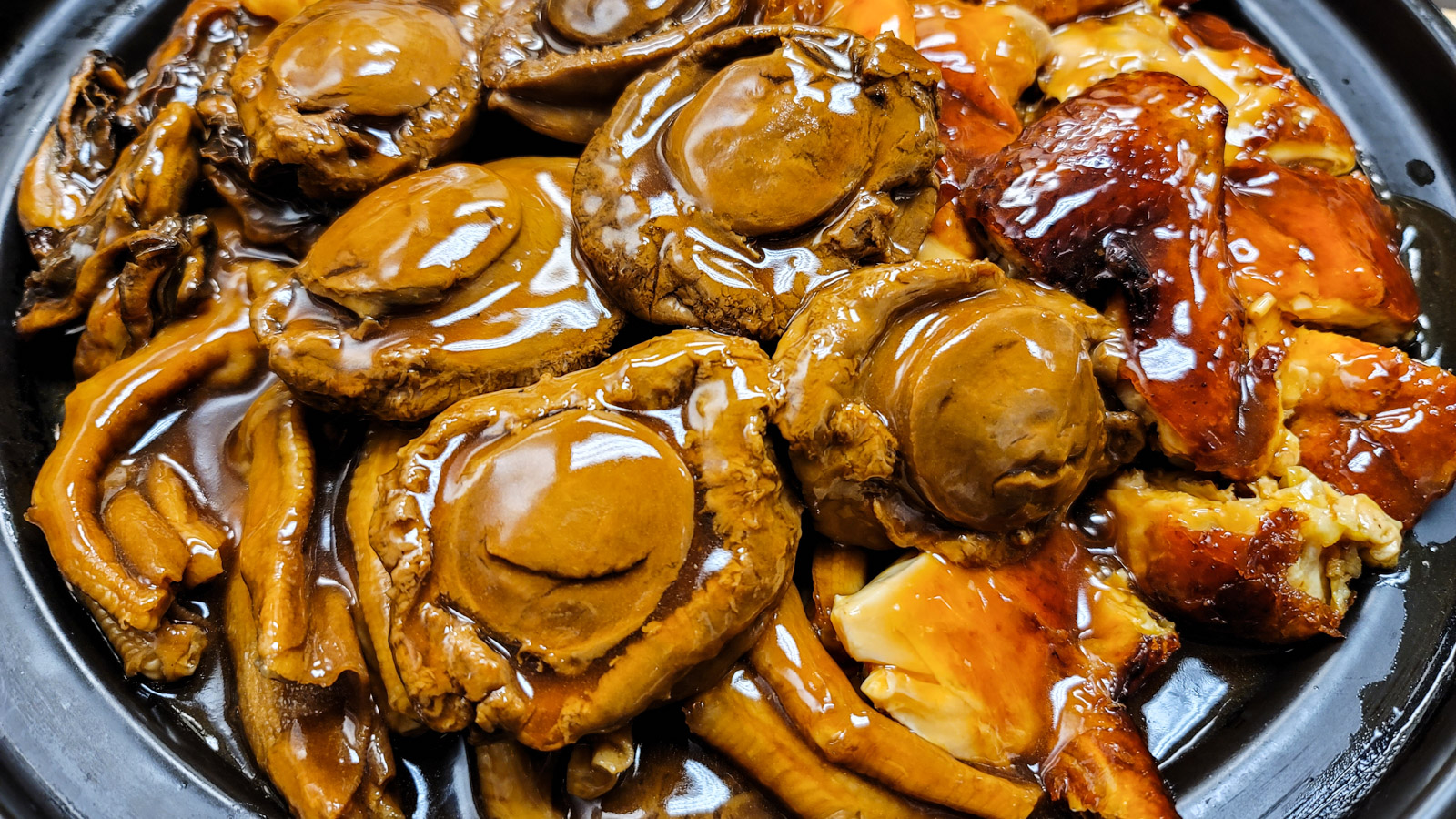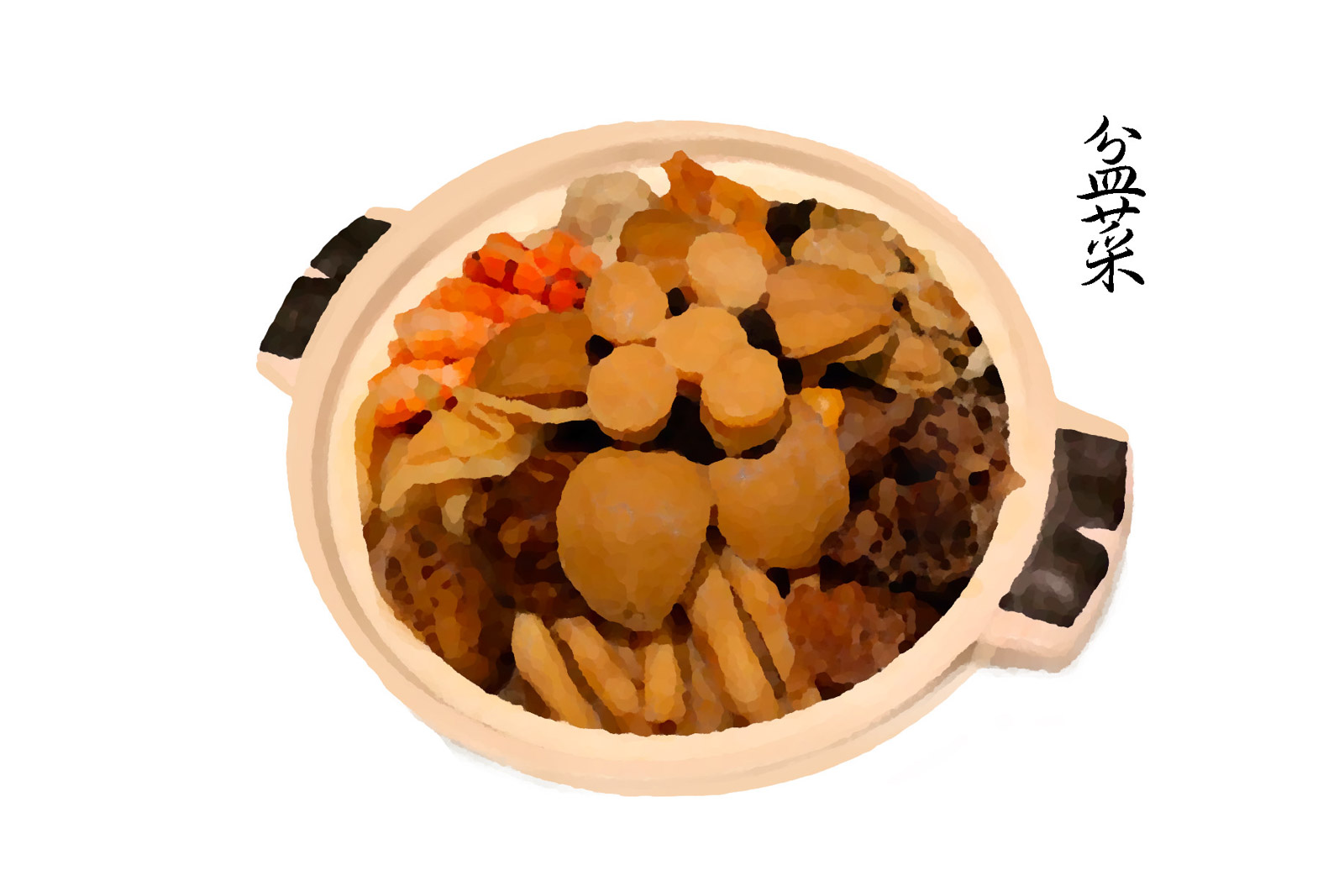I first ate pun choi almost 20 years ago when I was living in Hong Kong. My parents were invited by a local family to a small village for a Chinese New Year pun choi dinner. It’s a dish that, frankly, should not work, running counter to Cantonese culinary tenets that exalt pristine lightness. But it was superb! The flavours married as the pot cooked down with fresh vegetables, and many bowls of rice were eaten with the rich, savoury abalone demi-glace.
I stood on the chilly patio eating from the communal pot, the meal imbued with a deep sense of contentment and connection. It remains one of the best Chinese New Year’s experiences of my life.
As with Christmas and Diwali, Chinese New Year is a vital affirmation of the bonds of family and community. There is perhaps no single meal more important to the Chinese calendar than the Lunar New Year’s Eve dinner.
The symbolism of key dishes, from steamed whole fish to whole roasted chicken, represent the enduring core values of togetherness—a family sharing in the triumphs and challenges of the outgoing year, while bringing vigour and hope to the new. COVID restrictions, though absolutely necessary, will deal a devastating blow to Chinese New Year celebrations this year.
In light of smaller gatherings this year, local Cantonese restaurants in Vancouver have been featuring pun choi (which literally translates to basin dish), as way to provide a bounty of auspicious ingredients in a one-pot meal. It’s a dish unique to the Hong Kong countryside, where family clan villages like the one I visited would gather around a shared pot or metal basin full of a long list of ingredients, including fish balls, pork belly, chicken, shrimp, and vegetables, all cooked into a rich stew. It’s become a celebratory dish in Hong Kong and, from humble beginnings, luxurious modern versions now lavishly feature gourmet abalone, dried scallops, sea cucumber, and fish maw.

Image courtesy of Chef Tony Seafood Restaurant.
This is not an easy dish to put together and the unwieldy list of ingredients can quickly turn into a murky mess. Properly preparing Chinese dried seafood is a multiday process that takes skill and experience. The dish is carefully assembled with robust components on the bottom and the most prized morsels on the top.
Fortunately, in Vancouver the talent pool of classically trained Cantonese chefs is one of the deepest in the world. Cantonese culinary powerhouses such as Kirin, Dynasty Seafood Restaurant, and Chef Tony Seafood Restaurant are all featuring pun choi on their Chinese New Year menus, both for dine-in and takeout.
For many, this year’s absence of the usual large family get-togethers will cast a sombre cloud over Chinese New Year celebrations. Though the raucous happy energy of crowded dinners, or yeet lau as the Cantonese say, may be a little muted—a pot of pun choi can still provide a shared sense of extravagance and celebration that is fundamental to ringing in the Lunar New Year.
Recently, our family bubble shared a pun choi at Chef Tony—the rich, glossy stew bubbling away, carefully finished with superior stock tableside by the general manager, Wallace Chan. It was spectacular and we tucked in greedily. Chan beamed with genuine delight and pride seeing us enjoy ourselves so unabashedly.
This year, Chinese New Year gatherings may be smaller, but the meals will still be deliciously meaningful.
Read more local Food and Drink stories.









